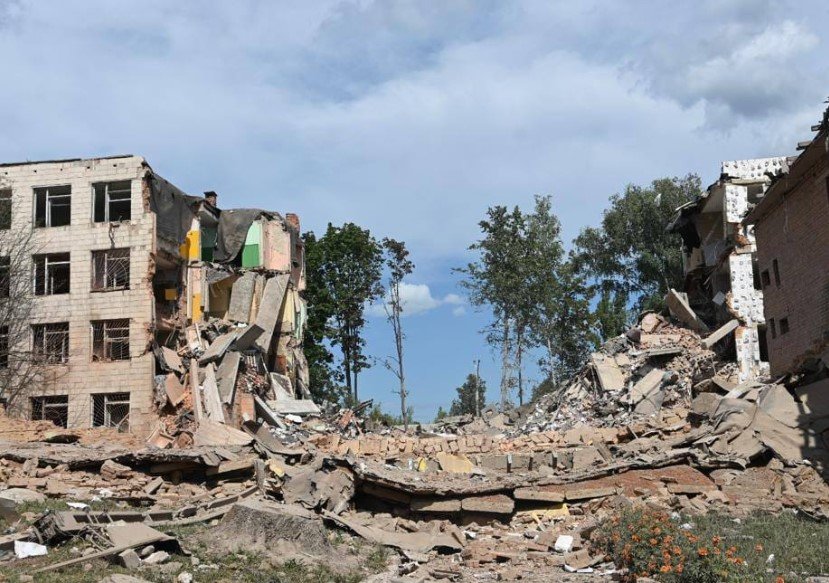Overnight barrage of 537 weapons marks Moscow’s biggest assault since war began as Kyiv reels from mounting air losses
It was the kind of night that stretched on forever. Ukraine’s skies lit up with cruise missiles, kamikaze drones, and the cold hum of anti-aircraft fire — all part of Russia’s largest single aerial assault since the invasion began over two years ago. In total, 537 aerial weapons rained down. And with them came a gut-wrenching loss.
One of Ukraine’s newly trained F-16 fighter pilots, whose name hasn’t been released yet, died in a crash while trying to steer his jet away from a populated area. There was no time to eject. Just a steep nosedive, and silence.
The pilot’s death has again exposed the brutal costs of this grinding war — and the limits of Ukraine’s current defenses.
Night of fire and fear
The scale of the attack was staggering. Ukrainian officials described it as a “coordinated storm,” beginning just after midnight and lasting into the early hours of Sunday morning.
The country’s air defenses — still a patchwork of aging Soviet-era systems and recently delivered Western gear — scrambled to intercept wave after wave. Sirens howled across major cities.
In Kyiv, families took shelter deep underground in the metro, hugging their children through hours of explosions. One resident told local media it felt “like the walls were breathing in fear.”
Elsewhere, destruction hit harder.
In Smila, a small town in Cherkasy region, a residential apartment block was ripped open by debris from a downed drone. Firefighters worked through the smoke and broken glass. At least 12 people were injured across the country, local officials said.

A grim milestone for Ukraine’s F-16 fleet
The death of the F-16 pilot marks the third confirmed loss of a U.S.-made jet since they were quietly introduced last year — part of a long-awaited Western support package aimed at bolstering Ukraine’s air capabilities.
Kyiv hasn’t publicly revealed the full number of jets in service, but sources close to the defense ministry told Bloomberg the fleet remains “limited and fragile.” Pilots are being trained abroad, often in compressed programs that would normally take much longer in peacetime.
There’s a growing concern in Ukraine’s defense circles that the jets are being used without sufficient ground infrastructure — or enough time to establish reliable airfields.
A one-sentence statement from the Ukrainian Air Force summed up the heartbreak: “He gave his life to protect others.”
Zelensky’s latest appeal lands in Washington’s inbox
President Volodymyr Zelensky didn’t waste time. Hours after the attack, he issued a direct message to Washington: Ukraine needs more air defense systems — now.
In a video message posted to his official Telegram channel, Zelensky said, “The scale of this strike proves that our enemy does not intend to stop. They are betting on exhaustion. But we need reinforcement, not waiting games.”
He repeated calls for Patriot systems, NASAMS units, and faster deliveries of promised equipment.
One senior adviser to Zelensky, speaking anonymously to Bloomberg, said the administration is also asking for a renewed air surveillance net “similar to Israel’s Iron Dome,” but adjusted to Ukraine’s vast geography.
Here’s what Ukraine is urgently requesting, according to the official:
-
Additional Patriot missile batteries for Kyiv, Kharkiv, and Dnipro
-
More F-16 squadrons to replace recent losses
-
Electronic warfare jammers to counter Iranian-made Shahed drones
-
Spare parts for older MiG-29s still in service
A table showing estimated losses since F-16 deployment
| Category | Count (Since 2024) |
|---|---|
| F-16 Jets Lost | 3 |
| Ukrainian Pilots Killed | 3 |
| Confirmed Sorties | 143 |
| Interceptions Attributed | 76 |
| Airfield Attacks | 12 |
Despite the high cost, military experts say the presence of even a small number of F-16s has changed how Russian aircraft approach Ukrainian airspace.
But without consistent upgrades and support, they warn, it’s a short-lived advantage.
Putin offers talks — again
Ironically, the barrage came just a day after Russian President Vladimir Putin signaled readiness for renewed peace talks in Istanbul — a city where previous rounds collapsed in acrimony.
This isn’t the first time Moscow has offered a diplomatic olive branch while unleashing destruction the same week. Many Ukrainians have grown skeptical of such overtures, viewing them as stall tactics designed to gain time on the battlefield.
Zelensky, in his usual frank style, dismissed the offer unless Russia first withdrew troops from key occupied regions. “We are not negotiating surrender,” he said last week in response to similar comments from Moscow.
Still, behind the scenes, Turkish and UN diplomats are reportedly working on a possible “humanitarian corridor” agreement that would allow for civilian evacuations near the frontlines — especially in Donetsk and Zaporizhzhia.
On the ground, despair mixes with grit
In Lviv, a city in Ukraine’s west that has mostly been spared the war’s worst, the shock from Sunday’s attack was palpable. Several industrial facilities were hit. Power outages stretched into the morning.
A 10-year-old girl in the region told Ukrainian television that she “counted 12 booms” while curled up under a blanket with her dog.
Just one sentence can make all the difference.
Yet amid all the fear, stories of courage keep surfacing. Firefighters in Khmelnytskyi worked eight hours straight to put out fires in a school hit by falling missile parts. In Kyiv, volunteers served tea and food to families sheltering underground.
